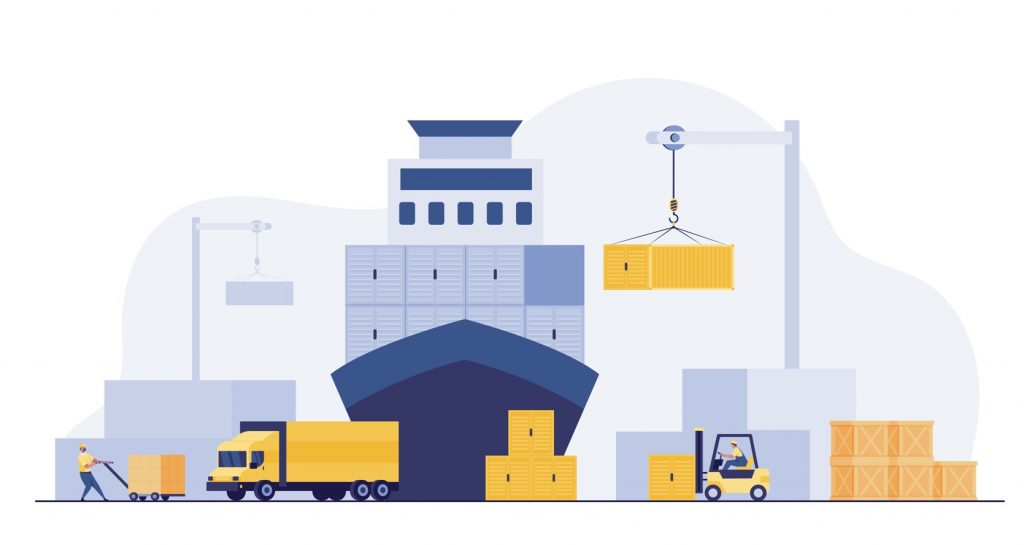
Global Shipping Challenges 2024
Posted on February 08 2024

The global shipping industry faces an array of challenges as we step into 2024. Despite being essential for the movement of goods and sustaining international trade, the sector continues to be hit by a range of factors that threaten to disrupt its efficiency and resilience.
In this article, we take a look at the global shipping challenges that the industry is likely to face this year. The key findings are:
- Port congestion and labour shortages will continue to cause delays
- Shipping container shortages will persist
- Rising fuel prices will likely cause freight rates to increase
- Logistics companies will be encouraged to invest in sustainability
- Investment in cyber security and digitisation will continue
- AI and blockchain technology will improve supply chain visibility
- Geopolitical conflicts will cause global disruption
- The 2024 expiration of HGV driver cards will lead to further driver shortages
Supply Chain Disruptions
The ongoing repercussions of the COVID-19 pandemic continue to impact supply chains and logistics causing issues across the globe. Disruptions such as port closures, labour shortages and lockdowns led to delays in shipping schedules which has not only increased operational costs, but has also highlighted the vulnerability of the global supply chain to unforeseen events.
Ever-Growing Container Shortage
The shortage of shipping containers, a problem that surfaced after the pandemic, is expected to persist in 2024. The shortage began when manufacturers closed their factories during the pandemic causing containers to be held at ports and storage facilities. At the same time, shipping companies reduced vessel numbers due to falling demand, meaning empty containers were not picked up by cargo vessels.
The current demand for containers far surpasses the supply, resulting in increased shipping costs and delays. This shortage is exacerbated by imbalances in trade with manufacturing and demand recovering more quickly in China, leaving Chinese ports facing a shortage of empty containers, while North American and European ports have a surplus. This imbalance is increasing as goods flow from China to Europe and North America, but empty containers do not flow back to China.
Rising Fuel Prices and Environmental Concerns
The shipping industry relies heavily on fossil fuels, and the continuous rise in oil price poses a significant financial burden for shipping companies. In Q3 2023, fuel prices rose dramatically with costs being passed down to shipping companies. Reduced global oil production means price volatility will likely continue into 2024.
Simultaneously, there is growing pressure on the industry to reduce its carbon footprint and transition towards more sustainable and eco-friendly practices. The implementation of stricter environmental regulations, such as the International Maritime Organisation’s IMO 2020 rule demanding cleaner fuel and retrofitted emissions scrubbers, further adds to the challenges faced by shipping companies.
Technological Integration and Cybersecurity Risks
The pandemic and transition to remote work saw many of the larger logistics companies digitalise their processes and move towards 100% paperless shipping. It is expected that developments with artificial intelligence (AI) and blockchain technology will improve shipment tracking and supply chain visibility over the coming years.
As the industry progresses towards greater digitisation and automation, the risk of cyber threats increases. The integration of advanced technologies, such as the Internet of Things (IoT) and artificial intelligence, brings concerns about data security and potential disruptions to critical systems. Ensuring robust cybersecurity measures are in place will be important for the shipping industry to navigate these challenges.
Geopolitical Tensions and Trade Wars
Geopolitical tensions, due to the ongoing conflicts in Gaza and Ukraine, the Red Sea crisis and trade disputes between major economies will likely have a large impact on global shipping routes and operations. Shifts in trade alliances, tariff escalations and political uncertainties will lead to alterations in shipping patterns and trade volumes, affecting the profitability and stability of the industry.
Infrastructure Strain at Ports
Capacity constraints at a number of global ports are having a negative effect on the smooth flow of goods. Many ports are struggling to upgrade and expand their infrastructure to accommodate the increasing demands of larger vessels and growing trade volumes. Bottlenecks at ports can result in congestion, delays and increased costs for shipping companies.
Adding to the issue, water shortages, as seen in the Panama Canal and excessive drought across the USA, have forced some ports to suspend operations causing further delays.
Road freight
The UK’s recommitment to achieving net-zero carbon emissions by 2050 means that logistics companies are expected to increase investment in electric (EVs), hybrid, hydrogen-powered (HVS) and bio-fuel (HVO) vehicles. By 2040, all new HGV sales will be required to have zero emissions, intensifying the industry’s push towards eco-friendly solutions.
Despite improvements in the HGV driver shortage crisis, 2024 presents a new challenge. The Office for National Statistics estimates that half a million driver qualification cards will expire in 2024. This equates to 17 million hours of retraining, which will cause strain on training facilities and driver availability in 2024.
Summary
The global shipping industry faces a complex set of challenges in 2024. Stakeholders including shipping companies, governments and international organisations must collaborate to find innovative solutions and build a more resilient and sustainable future for the shipping industry. By embracing technological advancements, enhancing cybersecurity measures and improving international cooperation, the industry can navigate these troubled waters and emerge stronger.
Stadium Export Services is an expert shipping provider and customs broker with over 35 years’ combined experience. Find out more about our freight forwarding solutions or contact us to discuss your shipping requirements.